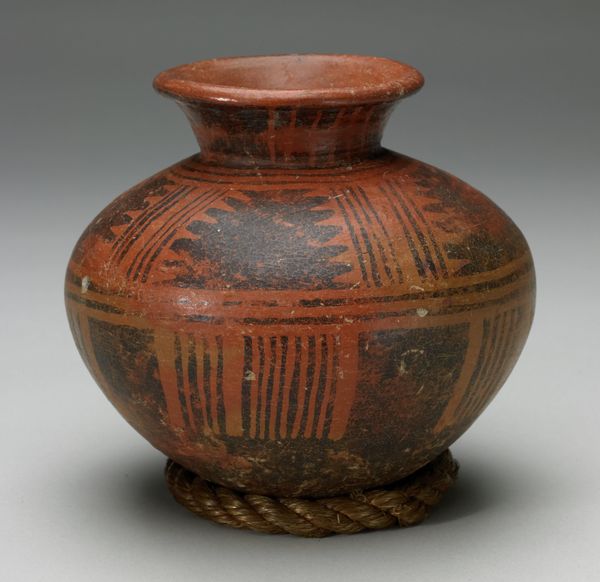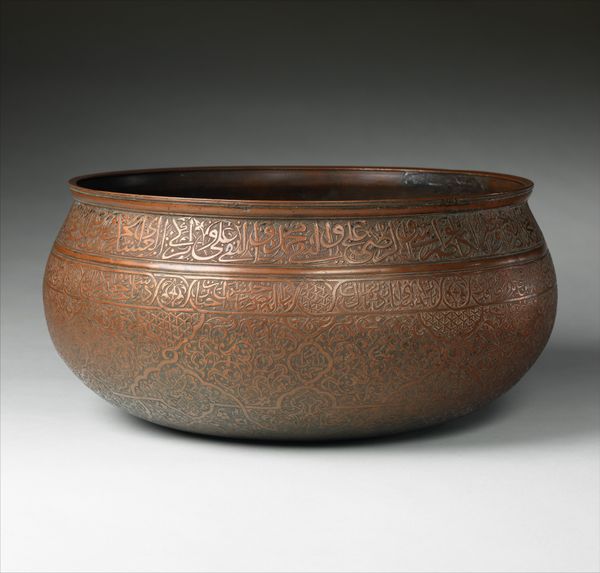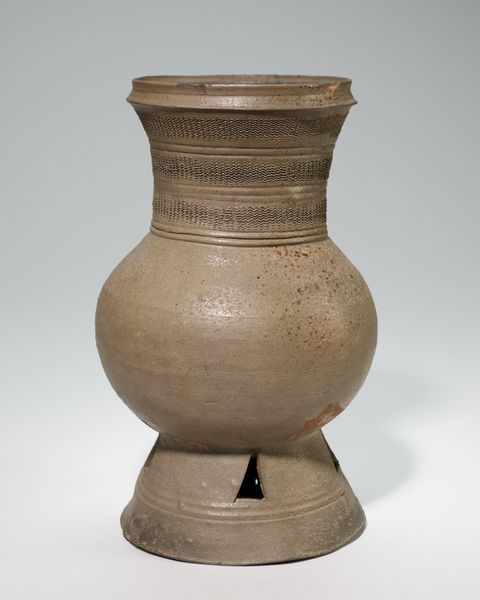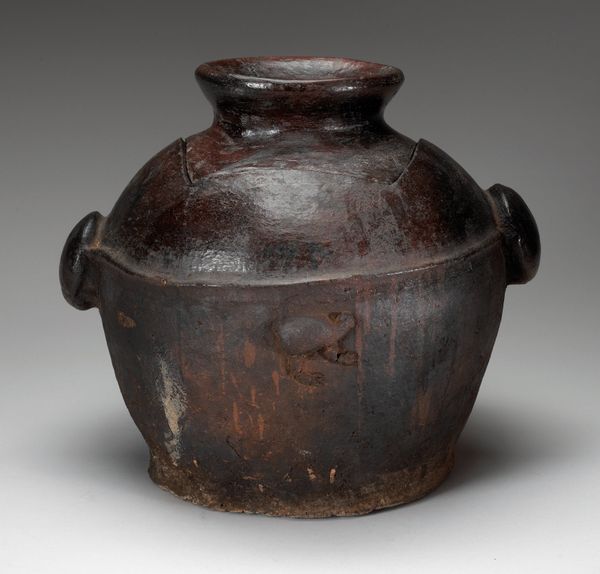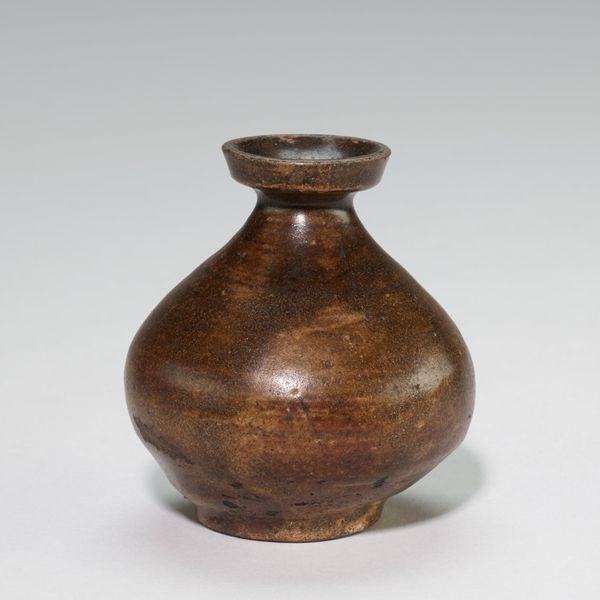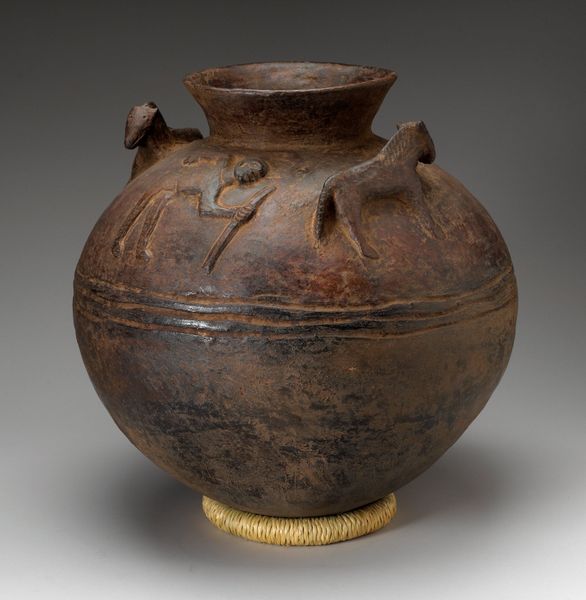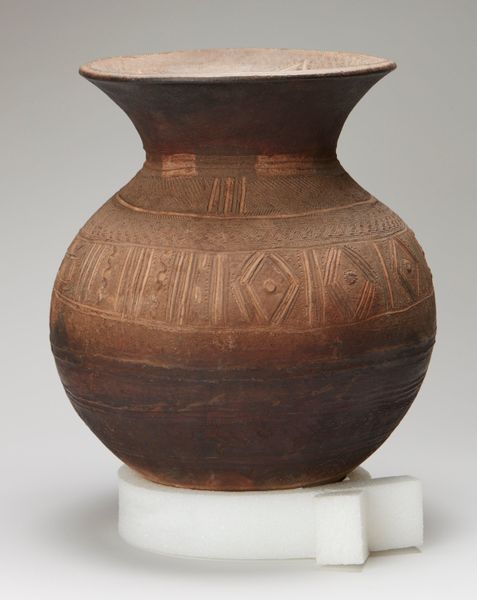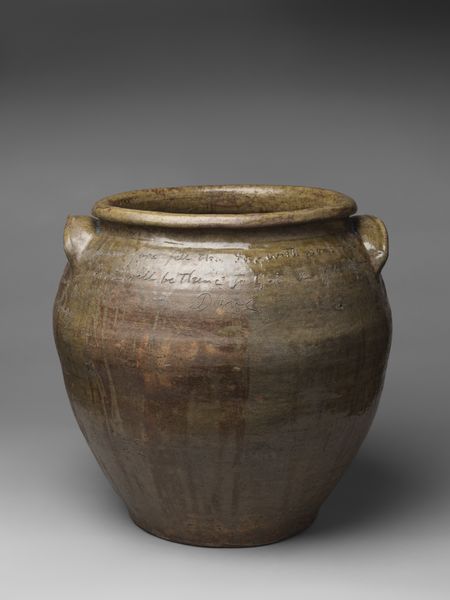
ceramic, earthenware
#
ceramic
#
earthenware
#
stoneware
#
ceramic
#
decorative-art
Dimensions: H. 10 7/8 in. (27.6 cm); Diam. 8 in. (20.3 cm)
Copyright: Public Domain
Curator: Before us stands an earthenware jar crafted in 1838 by John M. Safford. You can find it in the decorative arts collection here at the Metropolitan Museum. Editor: It gives off such a warm, domestic feeling, doesn’t it? The glaze has a kind of honeyed tone that really invites you closer, and the size seems perfect for a cozy kitchen. Curator: Precisely. It's fascinating how even a utilitarian object can embody so much about its time. Consider the context—American decorative arts were, during this period, heavily influenced by European styles, yet there was a growing desire for distinctively "American" forms and designs. Editor: I notice the repeating patterns circling the jar. Those floral motifs are more than just decoration; they are age-old symbols of fertility, prosperity, and the bounty of nature—harking back to very primal yearnings for home, hearth, and stability. Curator: Absolutely. But even more intriguing is the democratization of artistry it represents. Pottery like this, while decorative, was made accessible through mass production and reflects evolving social norms around home life and dining. This wasn’t some elite artwork; it was something potentially within reach of the rising middle class. Editor: And those concentric circles themselves can symbolize wholeness and containment, speaking volumes about how we literally and metaphorically "contain" life and experience. Every household activity relies upon tools that quietly reinforce symbolic order and daily existence. Curator: The beauty lies in its everydayness, challenging what constitutes ‘art’ and how that art intertwines with prevailing socio-economic landscapes and technological innovations of its time. Think about the expanding railways allowing for easier material transport… Editor: It’s funny how an unassuming jar speaks to such profound levels. I can look at it for ages, it makes me think how such humble objects are laden with memories, customs and human emotions through eras and ages. Curator: It does cause one to appreciate that art isn’t always in grand museums alone, it is intertwined and rooted within daily lives shaping what we call now societies through culture, politics and human expression, that lives far beyond paintings hung on a wall.
Comments
No comments
Be the first to comment and join the conversation on the ultimate creative platform.
